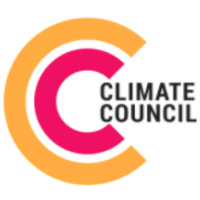The Climate Council (CC) says there are six good reasons to feel inspired about post-election climate action in Australia.
The CC says young people in Australia are adding their voice to a global climate action movement.
States, territories, communities and households are also embracing renewable energy, no matter who is wielding power in Canberra.
Here are the CC’s six reasons why people should feel positive about combating climate change, and the steps they are taking.
1. Mood for change still, despite election result
The predicted swing to Labor and the Greens didn’t happen on May 18. Their emphasis on renewable policies had prompted some to label last week’s poll as the ‘climate change election’.

Many regional voters backed jobs in traditional industries – including coal mines in Queensland, where Labor performed badly at the ballot box.
Despite this, the ABC’s Vote Compass showed more than 80 per cent of Australian voters want more Commonwealth government action on climate change. It will be hard for the Coalition to ignore its pro-renewable supporters in urban electorates who want post-election climate action.
The Climate Council says it will also pressure the government to act on climate change and support renewable energy like solar power and battery storage.
2. Young people insist on post-election climate action
Young Australians are making it clear they want governments to take immediate action to tackle the climate emergency.
The global school climate strike movement was started by 15-year-old Swedish student Greta Thunberg in 2018.
As a result more than 1.5 million people took part in the schools strike for climate action on March 15 this year. They came from more than 2,000 cities and towns in over 100 countries around the world.
Meanwhile, students in Central Victoria were busy driving the Australian movement. More than 50,000 students in over 60 different locations across Australia joined the March strike.
3. Global transition to renewable energy underway
Countries around the world are transitioning to renewable energy because it’s cheaper and cleaner than coal-fired power generation.
According to a 2018 Carbon Tracker report, by 2030 it will be cheaper to build new renewable generators than continue operating 96 per cent of the world’s existing and planned coal plants.
Because of statistics like these, renewables like wind and solar panels are winning twice as much investment as new fossil fuel and nuclear capacity combined.
A 2019 International Renewable Energy Agency (IRENA) report, ‘A New World’, says countries which take the lead in clean energy technology can also “expect to enhance their global influence and reach”.
4. State and territory governments lead the way
Closer to home, state and territory governments are filling the federal gap with post-election climate action. Their action items include strong renewable energy targets (RETs) and emission reduction goals.
- Tasmania: On track for 100 per cent renewable energy by 2022.
- ACT: Wants 100 per cent renewables by 2020.
- SA: On track for 73 per cent renewables by 2020.
- Victoria: Wants 25 per cent renewable by 2020 and 40 per cent by 2025.
- Queensland: Wants 50 per cent renewables by 2030 with the most projects under way.
- NSW: Strong renewable pipeline.
- NT: Wants 50 per cent renewables by 2030.
- WA: The only state with no RET or net-zero emissions target.
5. Local communities tackle climate emergency
More than 100 local governments across Australia have joined the Climate Council’s Cities Power Partnership (CPP). It’s a free, national program to help towns and cities make a renewable transition.
It’s the largest climate program for local governments in Australia. It also includes more than 300 towns and cities representing over 10 million Australians.
Meanwhile, community clean energy support groups are engaging communities across the country. Not-for-profit organisations like More Australian Solar Homes (MASH) in central Victoria are helping local communities access affordable solar installations.

The Victorian government is also putting $1.1 million into community energy project grants. Meanwhile, a bulk-buy solar scheme is helping low-income residents in Port Pirie, South Australia.
6. Australian households embrace solar power
Finally, in non governmental post-election climate action, Aussie households are leading the quiet revolution in distributed energy resources (DER), which include rooftop solar panels and home batteries.
More than two million Australian households now have rooftop solar panels. This is up from just 85,000 in 2009.
In the March quarter of 2019 alone, rooftop solar installations surged by close to 50 per cent compared to the same quarter last year.
Meanwhile, solar battery growth is slower but making up ground. Bloomberg New Energy Finance says battery prices will fall at least 50 per cent by 2030. Australia’s battery storage market could therefore become a $1.7 trillion industry.







































